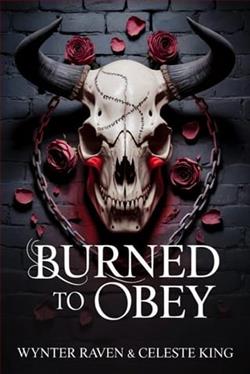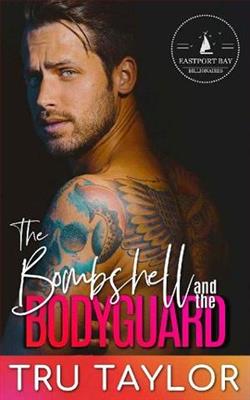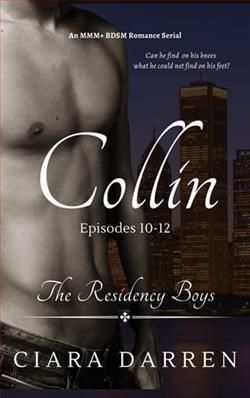
Burned to Obey
by Wynter Raven
She lit the wrong ship on fire.
Now she wakes up in my fortress, wearing my brand.
They sentenced her to die in the arena.
I overruled them.
Not to save her.
To own her.
She’s angry. Defiant. All sharp teeth and spit.
But I’ve seen defiance before.
It cracks.
She’ll eat when I say. Sleep when I allow.
Speak only when spoken to.
And when her fire dims,
I’ll light it again—on her knees, at my feet, begging for the control she swore she’d never surrender.
I branded her to protect her from the Senate.
But now?
I’ll keep her caged until she loves the lock.
Read on for: brutal warden energy, brand as collar, power play dynamics, sworn enemies, and a heroine who thought death was the worst fate—until she met him. HEA guaranteed.
.
Read
Burned to Obey on http://kissnovel.net
Martial Peak Reviews
Wynter Raven's Burned to Obey is a gripping exploration of power dynamics, control, and the complex interplay between captor and captive. The novel plunges readers into a dystopian world where societal norms are dictated by a ruthless Senate, and individual freedom is a luxury few can afford. At its core, the book is a dark romance that challenges the boundaries of consent and autonomy, making it a compelling read for those who appreciate stories that delve into the darker aspects of human relationships.
The story begins with a dramatic and incendiary act—our protagonist, a fiery and defiant woman, sets the wrong ship ablaze. This reckless act of rebellion lands her in the clutches of a powerful warden, who brands her as his own. The branding is not just a physical mark but a symbol of ownership and protection from the Senate's cruel justice system. This initial setup immediately establishes the high stakes and the intense power struggle that will unfold throughout the narrative.
One of the most striking elements of Burned to Obey is its exploration of power play dynamics. The relationship between the warden and the heroine is fraught with tension, as he seeks to break her spirit and bend her to his will. The warden's character is crafted with a brutal energy that is both intimidating and intriguing. He is a man accustomed to control, and his interactions with the heroine are a masterclass in psychological manipulation. Yet, beneath his domineering exterior lies a complexity that slowly unravels as the story progresses.
The heroine, on the other hand, is a force of nature. Her defiance and resilience are her defining traits, and she refuses to be subdued easily. Her journey from a rebellious captive to someone who must navigate the treacherous waters of her new reality is both heart-wrenching and empowering. Raven does an excellent job of portraying her internal struggle, as she grapples with the loss of her freedom and the burgeoning, unwanted connection with her captor.
The theme of control versus autonomy is central to the narrative. The heroine's initial resistance to the warden's authority is a testament to her strength, but as the story unfolds, it becomes clear that the lines between captor and captive are not as clear-cut as they seem. The warden's attempts to control her are met with equal parts defiance and curiosity, leading to a complex dance of power where both characters are forced to confront their deepest fears and desires.
Raven's writing is both evocative and immersive, drawing readers into a world that is as dangerous as it is fascinating. The author's ability to create a vivid and oppressive atmosphere adds to the tension, making the reader feel the weight of the heroine's predicament. The dialogue is sharp and often laced with underlying tension, reflecting the characters' internal conflicts and the shifting dynamics of their relationship.
In terms of character development, both the warden and the heroine undergo significant transformations. The warden's journey from a figure of authority to someone who must confront his own vulnerabilities is particularly compelling. His gradual realization that control is not synonymous with power adds depth to his character and challenges the reader's initial perceptions of him. Similarly, the heroine's evolution from a defiant captive to someone who must reconcile her feelings for her captor is handled with nuance and sensitivity.
Burned to Obey can be compared to other dark romances that explore similar themes, such as Captive in the Dark by C.J. Roberts or Twist Me by Anna Zaires. Like these novels, Raven's work delves into the morally ambiguous territory of love and control, forcing readers to question the nature of consent and the boundaries of desire. However, Raven's unique voice and the dystopian setting set Burned to Obey apart, offering a fresh perspective on the genre.
The novel's promise of a happily ever after (HEA) is both a relief and a testament to Raven's skill in crafting a story that, despite its dark themes, ultimately offers hope and redemption. The resolution is satisfying, providing closure to the characters' tumultuous journey while leaving room for reflection on the nature of love and power.
Overall, Burned to Obey is a thought-provoking and intense read that will appeal to fans of dark romance and dystopian fiction. Wynter Raven has crafted a story that is as much about the battle for control as it is about the search for connection in a world where both are scarce commodities. The novel's exploration of power dynamics, coupled with its richly developed characters and immersive setting, makes it a standout addition to the genre.
























Reviews 0
Post a Reviews: